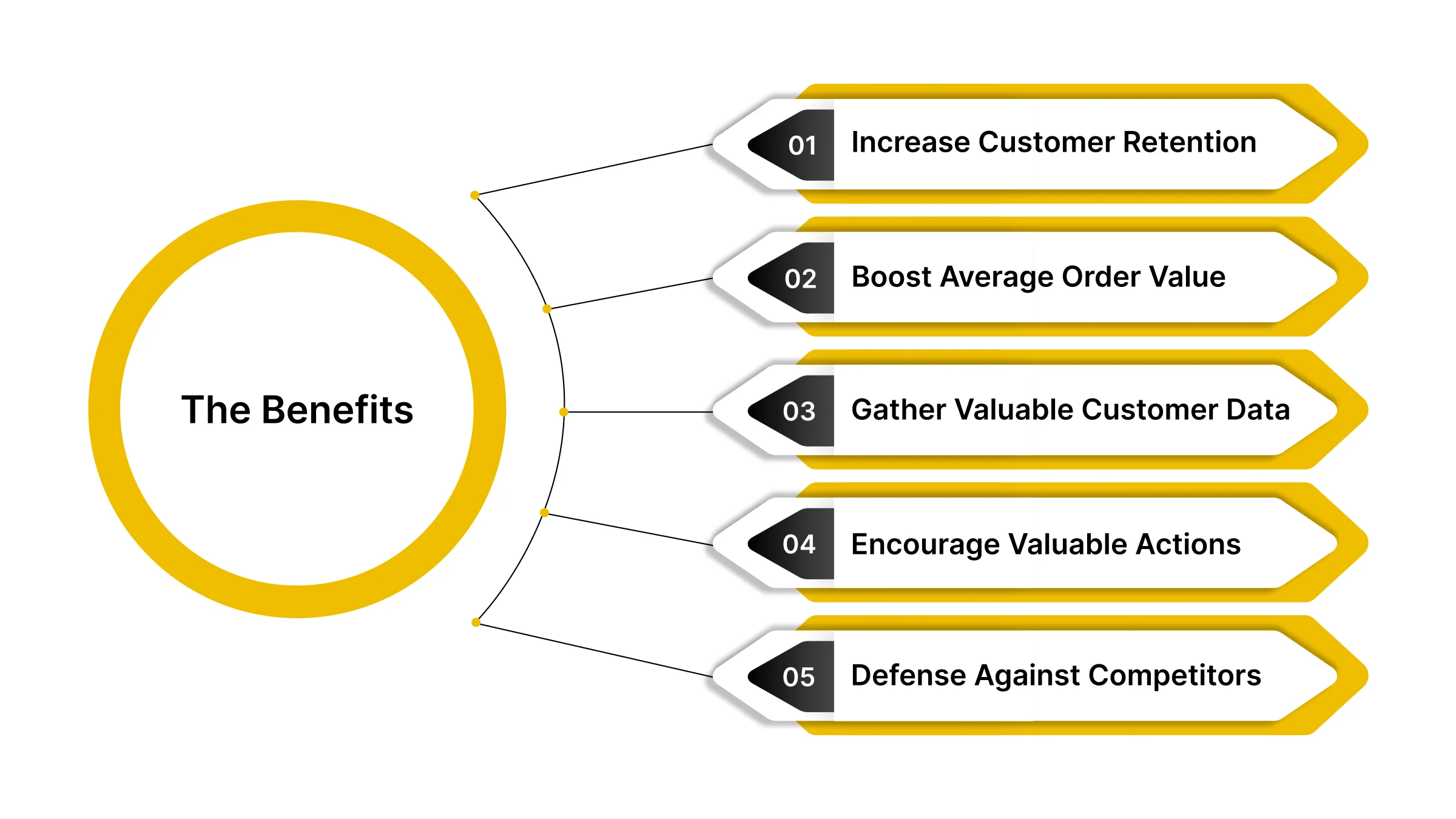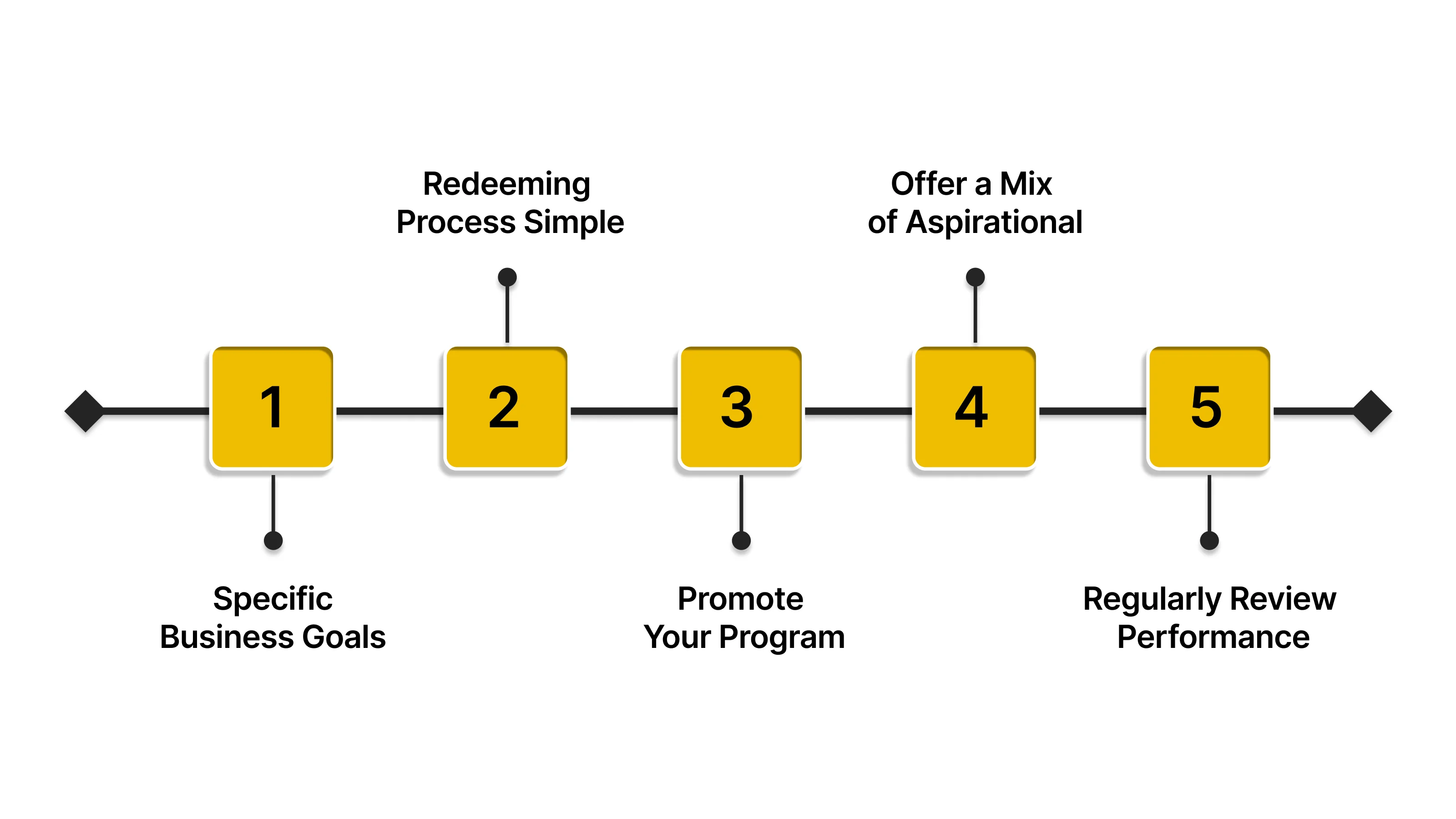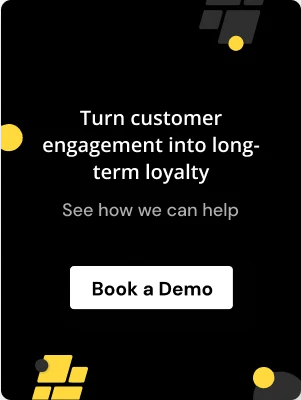.avif)
.avif)
You spend significant money acquiring new customers each year. Yet a large percentage never make a second purchase. This constant churn stalls your growth and drains your marketing budget. In fact, over 90% of U.S. companies have loyalty programs because 65% of their revenue comes from repeat business.
A structured loyalty strategy can directly address this retention problem. It systematically encourages repeat purchases and builds lasting customer relationships. This turns your one-time buyers into a reliable revenue stream.
This guide will explain the point reward system mechanics for e-commerce. You will learn its core benefits and essential structural components. We will also show you how to build a successful program efficiently.
Key Takeaways
- A point system turns customer actions like purchases and reviews into a branded currency. This strategy directly encourages repeat business and builds loyalty.
- Structure is crucial, built on clear earning rules, a valuable reward catalog, and simple redemption. A transparent tier system can further motivate high-value customers.
- The benefits extend beyond retention to higher-order values and lower-cost customer acquisition through referrals.
- Successful implementation requires aligning points with business goals and promoting the program across all customer touchpoints.
- Automation platforms like Nector eliminate the manual complexity of tracking points and managing rewards for e-commerce teams.
What Is The Point Reward System
A point reward system is a structured loyalty program for customers. It awards points for specific actions like purchases or reviews. Customers later redeem these accumulated points for rewards.
Think of it like a modern digital version of a coffee punch card. Each purchase earns a stamp, or in this case, points. After collecting enough points, a customer gets a free coffee or a discount.
This system provides clear, tangible value for your customers. It gives them a direct reason to return to your store. You effectively reward their continued engagement with your brand.
Understanding what it is leads to a crucial question: Why should your specific e-commerce brand invest in one?

The Benefits Of a Point Reward System For Businesses

A well-structured points program delivers measurable financial and operational advantages. These benefits directly impact your company's profitability and long-term stability. You gain more than just customer goodwill; you build a more predictable and efficient business model.
Implementing this system leads to several key financial and strategic benefits, such as:
1. Increase Customer Retention and Repeat Purchases
A 5% increase in customer retention can boost profits by 25% to 95%. A points system gives customers a concrete reason to return to your store. They see their points balance growing with each order. This visible progress encourages them to make their next purchase with you.
2. Boost Average Order Value (AOV)
Customers often spend more to reach a points threshold for a reward. You can offer bonus points for spending over a specific amount. This tactic motivates them to add extra items to their cart.
3. Gather Valuable Customer Data and Insights
Every loyalty point earned reveals a customer's preferences and buying habits. You can track which rewards are most popular. This data helps you personalize future marketing campaigns and product offerings.
4. Encourage Valuable Actions Beyond Purchasing
Reward points for actions that grow your brand, like writing reviews. You can also incentivize social media follows or referrals. This turns your customers into an active marketing channel for your business.
5. Build a Defense Against Competitors
A strong loyalty program makes your brand stickier and less easily replaced. Customers with a points balance are less likely to shop elsewhere. They have invested time and money into earning their rewards with you.
With Nector's loyalty program, you can seamlessly orchestrate end-to-end campaigns that feel individually crafted. Capture the rewards: forge unbreakable brand loyalty, dramatically increase customer lifetime value, and drive conversions with messaging that truly resonates. Book a demo to learn moe.
Knowing the benefits sets the stage for the 'how it works’. Let's break down the functional mechanics behind a points system.
How Do Points-Based Rewards Systems Work
A points system functions through a clear, automated cycle of actions and rewards. The customer performs specific tasks you define to earn currency for your store. Your system then tracks these earnings and facilitates redemptions, creating a continuous engagement loop.
The entire process relies on three core technical components working together.
1. The Earning Mechanism: Defining Valuable Actions
You first decide which customer behaviors will generate points. Common actions include making a purchase or creating an account. You can also reward social media engagement or referring a friend.
2. The Tracking & Tiering: Making Progress Visible
Your platform must track each customer's point balance accurately. A dashboard shows customers their current status and potential rewards. Tiered systems unlock new benefits after reaching specific point thresholds.
3. The Redemption Process: Converting Points into Value
Customers exchange their accumulated points for rewards you have set. These can include discounts, free products, or exclusive access. A smooth redemption process is crucial for long-term program satisfaction.
A Modern Example: The Target Circle Model
Modern loyalty programs are a proven growth engine for major retailers. A prime example is Target Circle, which has become one of the largest retail loyalty programs in the U.S. In 2023 alone, members generated a staggering $10 billion in rewards saved, directly influencing shopping behavior.
The program offers 1% earnings on purchases, personalized deals, and a birthday gift. This strategy successfully drives frequent engagement and massive savings redemption, demonstrating the powerful role a points system plays in building a loyal customer base and boosting revenue.
Also read: Powerful Customer Retention Strategies You Need to Know
A system's mechanics are powered by its underlying framework. Next, we will build the structure that makes it profitable.
Structure of a Profitable Points Program

A strong structure transforms a simple points system into a powerful growth engine. This framework dictates how customers interact with your brand daily. You must define the rules of earning, spending, and progressing clearly. A well-built structure feels both rewarding for customers and sustainable for your business.
Build your program's foundation using these five critical components.
1. Define Your Point Currency and Its Value
First, establish what one point is worth in real monetary terms. A common value is one point equaling one cent. This clarity helps customers understand the actual reward they are earning.
2. Set Clear and Attainable Earning Rules
Determine exactly how customers accumulate points through specific actions.
- Purchases: Award points based on a percentage of the order total.
- Non-purchase actions: Grant fixed points for reviews or social shares.
- Bonuses: Offer double points during special promotions or holidays.
3. Create a Compelling Reward Catalog
Your redemption options must offer genuine value that customers desire.
- Discounts: Allow points to be converted into money-off coupons.
- Products: Let customers exchange points for specific items.
- Exclusivity: Provide early access to new collections or sales.
4. Establish a Transparent Tier System (Optional)
Design tiers to reward your most loyal customers with superior benefits. Higher tiers could offer faster point earning or exclusive rewards. This strategy encourages increased spending to reach the next status level.
5. Determine the Program's Rules and Expiry
Finally, set the operational guidelines for your entire loyalty system. You should decide if points expire after a certain period of inactivity. Also, create clear terms and conditions for all earning and redemption activities.
Also read: Successful Loyalty Program Examples and Benefits for 2025
A solid structure creates a foundation for significant returns. Here are practical tips for implementing your system successfully.
Tips For Implementing A Successful Point Reward System

A successful launch requires more than just a technical setup. You need a strategy that connects with customers and drives engagement from day one. Careful planning ensures your program feels valuable rather than complicated. These practical steps will help you build a system that customers actively use.
Follow these actionable tips to build a program that delivers real results.
1. Align Points with Your Specific Business Goals
First, decide what primary objective your program should achieve. You might want to increase order frequency or boost average cart size. Your point earning rules should then directly encourage that specific customer behavior.
2. Keep the Earning and Redeeming Process Simple
Customers will not participate in a program that feels confusing. Avoid creating complex rules with multiple point values for different actions. Ensure they can easily check their balance and redeem points in just a few clicks.
3. Promote Your Program Across All Customer Touchpoints
Do not hide your new loyalty program on a single webpage. Announce it on your homepage, main menu, and post-purchase confirmation screens. Include reminders in your email and SMS marketing sequences for maximum visibility.
4. Offer a Mix of Aspirational and Instant Rewards
Provide small, immediate rewards like a welcome discount for joining. Also include larger, aspirational target rewards that require more points to earn. This strategy keeps customers engaged for both the short and long term.
5. Regularly Review Performance and Gather Feedback
Use your program's analytics to track redemption rates and popular rewards. Ask customers for direct feedback through simple surveys. This data allows you to refine and improve your program over time.
Simplicity is key. Nector’s intuitive dashboard makes managing your program effortless. Book a demo to discover how it works.
This approach is not just theoretical. See how other brands achieved measurable results with a structured program.
Case Studies
These results from real brands show the tangible impact of a well-executed points system.
1. Achieving 200x+ ROI on Loyalty
Your Medicals, a healthcare and wellness brand, needed a powerful customer retention strategy. They implemented Nector points program, rewarding purchases, reviews, and referrals. The program gave customers a significant reason to return and engage further.
This strategic approach generated an exceptional return on investment for Your Medicals. For every dollar spent, the program returned over two hundred dollars in revenue. It proved that a well-structured loyalty system directly drives profitability.
2. Driving a 204% Repeat Purchase Rate
The direct-to-consumer innerwear brand XYXX sought to build a dedicated customer community. They launched a multi-tiered Nector loyalty program to reward ongoing engagement. The program successfully encouraged consistent repeat purchasing behavior from its members.
This resulted in a remarkable average repeat purchase rate of two hundred four percent. XYXX's strategy effectively turned first-time buyers into a loyal, recurring customer base.
These real-world outcomes demonstrate the powerful impact a point system can have. This is where a dedicated platform becomes essential.
Build Your Point Reward System with Nector

Building a point system manually often overwhelms small e-commerce teams. Tracking individual points, managing redemptions, and preventing fraud requires significant time. This operational complexity can stall your loyalty program before it even launches.
Nector provides a complete platform for creating your custom point reward system. Our tools automate the entire process from point allocation to reward fulfillment. You can launch a professional program in hours instead of months.
With Nector, you gain access to powerful, business-building features:
- Fully Branded Program Design: Design a fully branded loyalty program that matches your store’s unique identity.
- Flexible Points & Rewards Rules: Set flexible rules to reward purchases, referrals, reviews, and social follows.
- Automated VIP & Tier Systems: Implement VIP tiers that automatically unlock special benefits for top customers.
- Built-in Performance Analytics: Use built-in analytics to track customer engagement and program performance.
- Seamless Shopify Integration: Integrate seamlessly with your existing Shopify store and other marketing tools.
This approach gives you a sophisticated loyalty program without the technical hassle. Learn more here.
Conclusion
A point reward system provides a clear framework for boosting customer loyalty. You can directly influence purchasing behavior and increase customer lifetime value. Its structure turns everyday actions into a compelling loyalty journey for your shoppers.
Manually managing points, tiers, and redemptions often creates operational complexity. Nector automates this entire process within a single intuitive platform. You can launch a custom-branded program that truly reflects your brand.
Create your high-converting loyalty program with Nector today. It’s free to get started. Try the Starter Plan with a 7-day trial, no credit card needed.
FAQs
1. What is an example of a point reward system?
A common example is a coffee shop's digital punch card. Customers earn one point or stamp for every purchase. After collecting ten points, they receive a free coffee. This simple model rewards repeat purchases with a tangible, desired reward.
2. What is the difference between a loyalty program and a rewards program?
A loyalty program is the overall strategy to build customer relationships. A rewards program is a tactical component within it, often using points. Think of loyalty as the goal and rewards as one method to achieve it.
3. How do you create a point system?
You start by defining your point currency's real value, like one point equals one cent. Then set clear rules for earning points through purchases or reviews. Finally, create a catalog of rewards that customers can redeem their points for.
4. What is a point-based strategy?
A point-based strategy uses a virtual currency to incentivize specific customer behaviors. You reward actions that support business goals, like spending more or referring friends. This systematically encourages valuable, repeat engagement with your brand.
5. Are points-based loyalty programs effective?
Yes, they are highly effective for increasing customer retention and lifetime value. They give customers a clear, tangible reason to choose your brand repeatedly. Programs also provide rich data on customer preferences and buying habits.
FAQs
Start Building Customer Retention That Lasts








